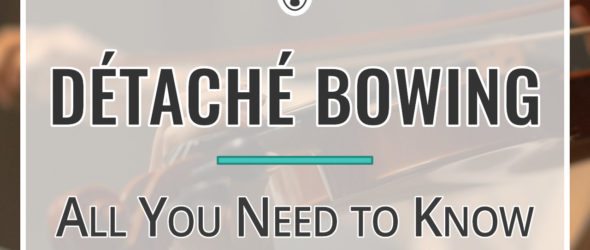Once you’ve started practicing the violin, it’s important to learn about our go-to bowing technique: détaché bowing. This is basically our default bow stroke that goes Down Bow, Up Bow, Down Bow, Up Bow back and forth, over and over again.
In this article, I’m sharing exactly what détaché bowing is, how it’s written in music, and how it’s different from other bowing techniques. This isn’t just a violin bowing technique – other string instruments play détaché too!
Keep reading to learn everything you need to know about this playing technique.
What is Détaché Bowing?
Détaché bowing is the default bow stroke on a bowed string instrument. It’s in between legato and staccato, with no accents on the notes. Every note lasts its entire length, but each note is played with separate bow strokes.
When we play détaché, we hear clear, articulated notes, but it’s not quite a fluid legato technique or a jaunty staccato technique.
Listen to this bowing technique in the video below. The violinist is playing a great détaché stroke: the notes are played with alternating bow strokes, but there are no breaks between the notes and no accents.
In Carl Flesch‘s book The Art of Violin Playing, the violin master wrote “détaché is the most important and frequently used bowing of all. Complete mastery of it is an absolute prerequisite for a good bowing technique.”
Détaché Bowing in Sheet Music Notation

Détaché has no special notation. If a composer would like us to play a passage détaché, they’ll simply write the notes with no bowings or articulations added. This shows us that each note should be played with long, alternating bow strokes: détaché bowing.
A great novice piece to learn détaché bowing is Frere Jacques. I have an entire video and free sheet music to help you learn the song.
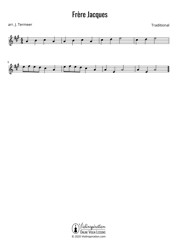
Frere Jacques
Free Violin Sheet Music
How do we Play Détaché on the Violin?
Détaché is our “default” bow stroke as violinists. We alternate separate bow stroke (down bow, up bow, down bow, up bow, etc.). When a piece of music calls for détaché, we want the notes to be separate, but still, sound somewhat connected. But how do we achieve that?
Bow Hold
Before trying to learn détaché bowing, you want to be sure you’re holding the bow correctly.
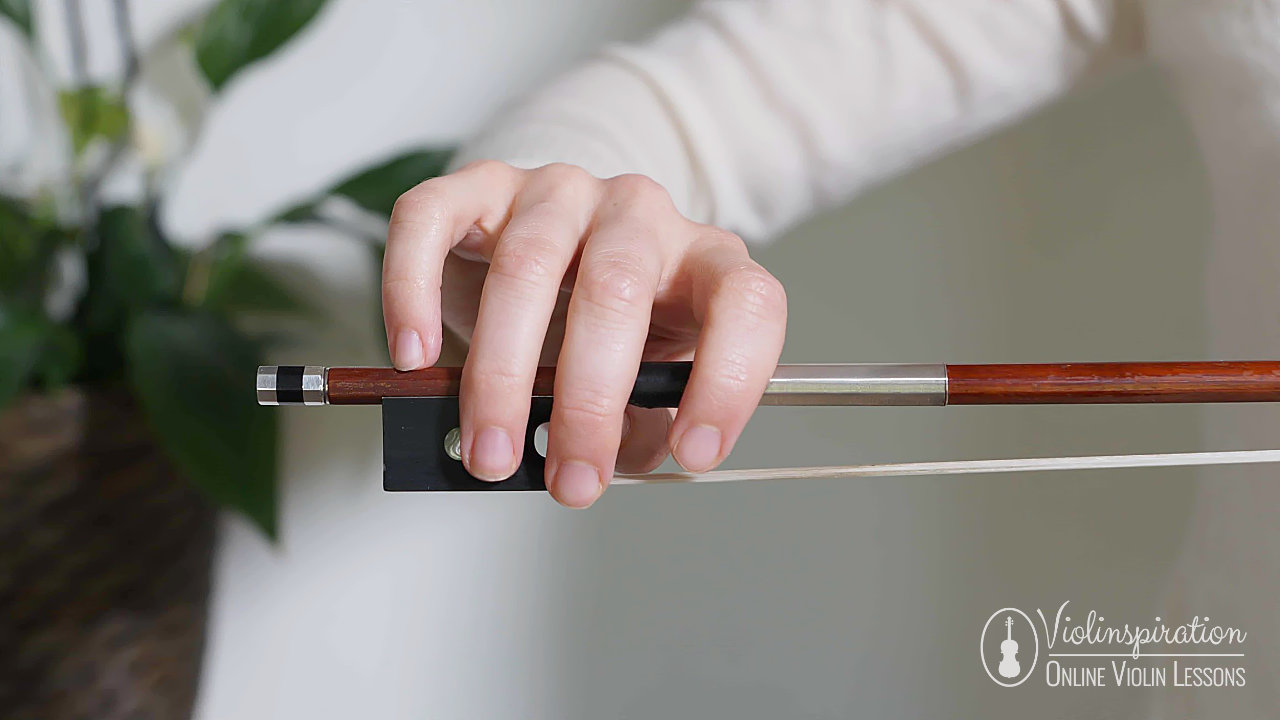
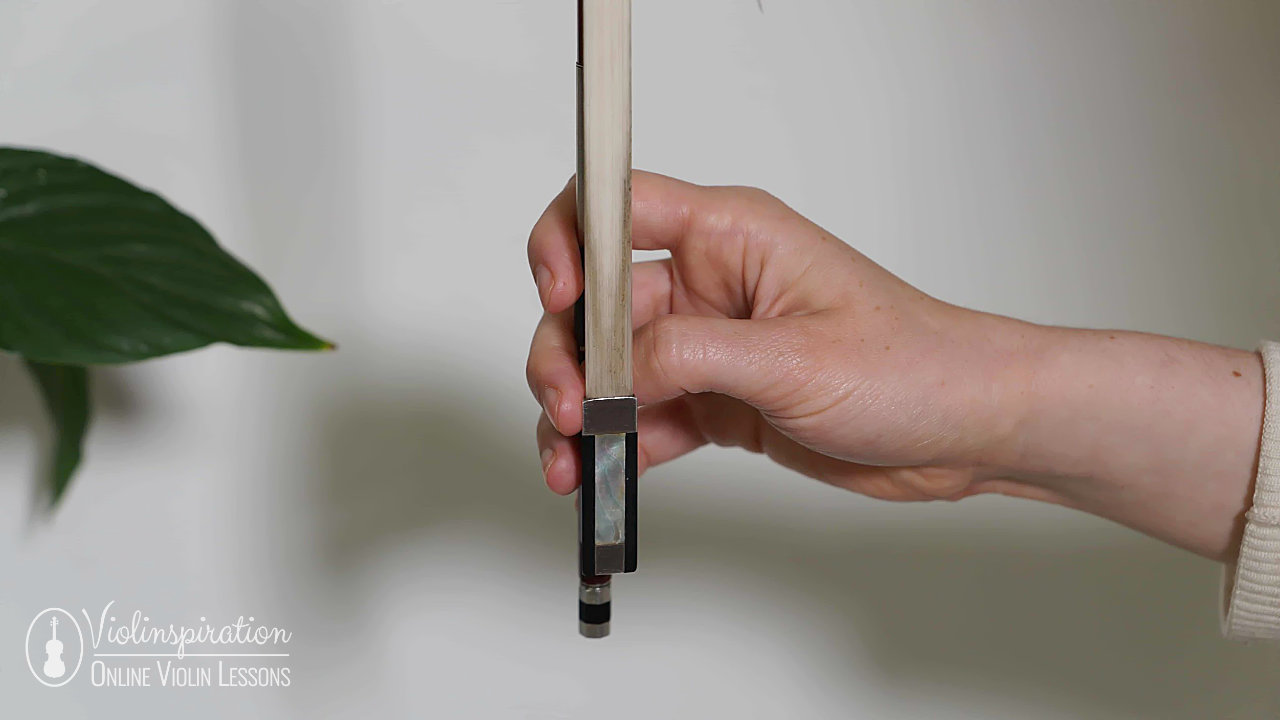
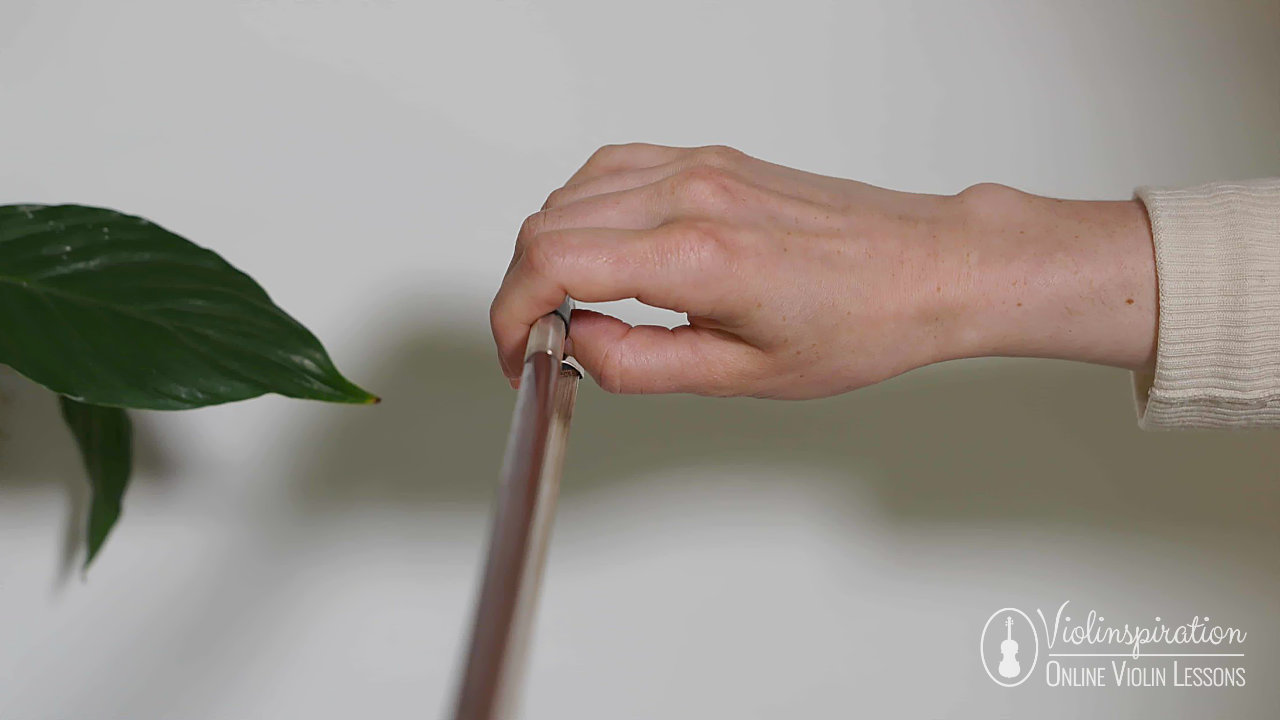
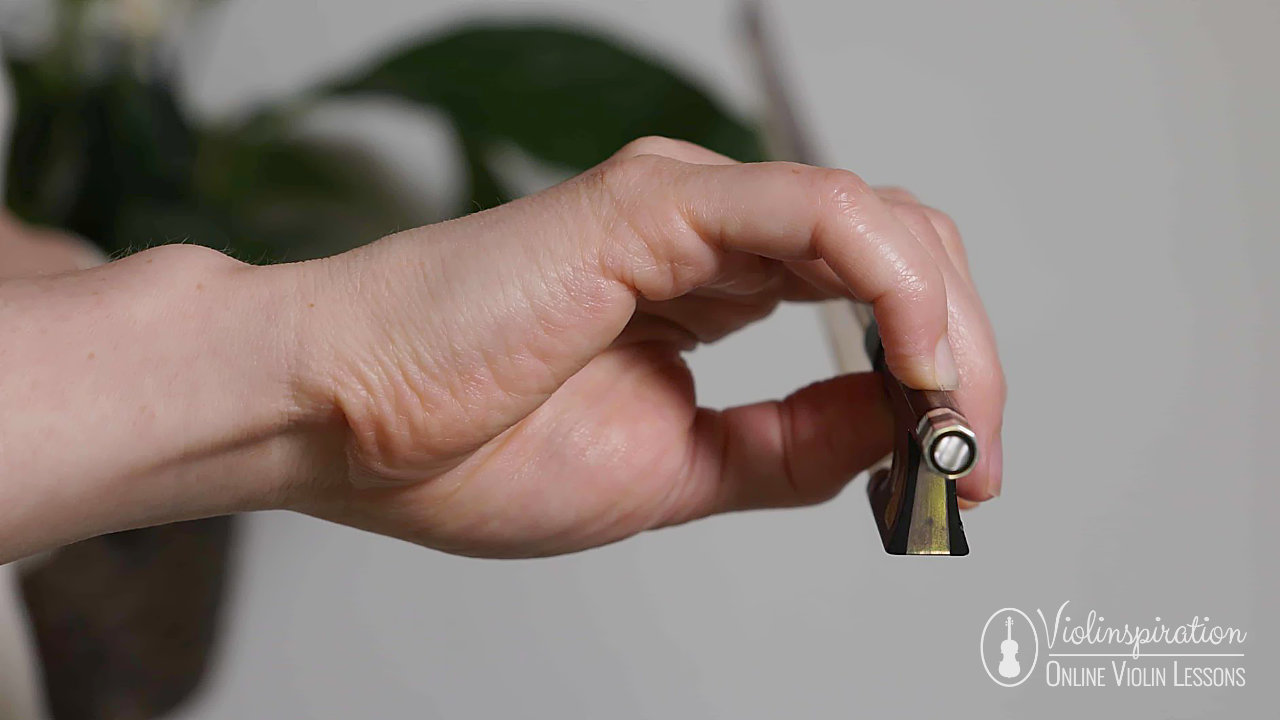
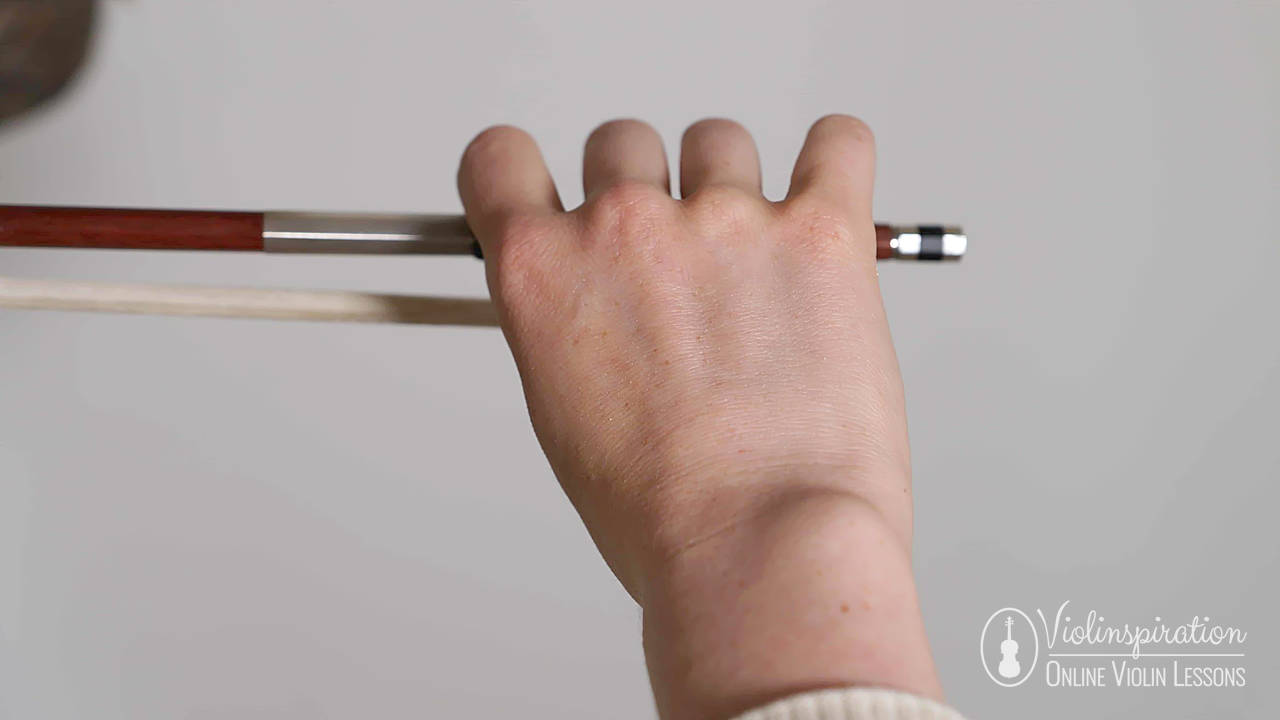
Check your bow hold with these pictures or, even better, check out my guide to holding the bow. It includes the six steps to a perfect bow hold!
The Bow Stroke
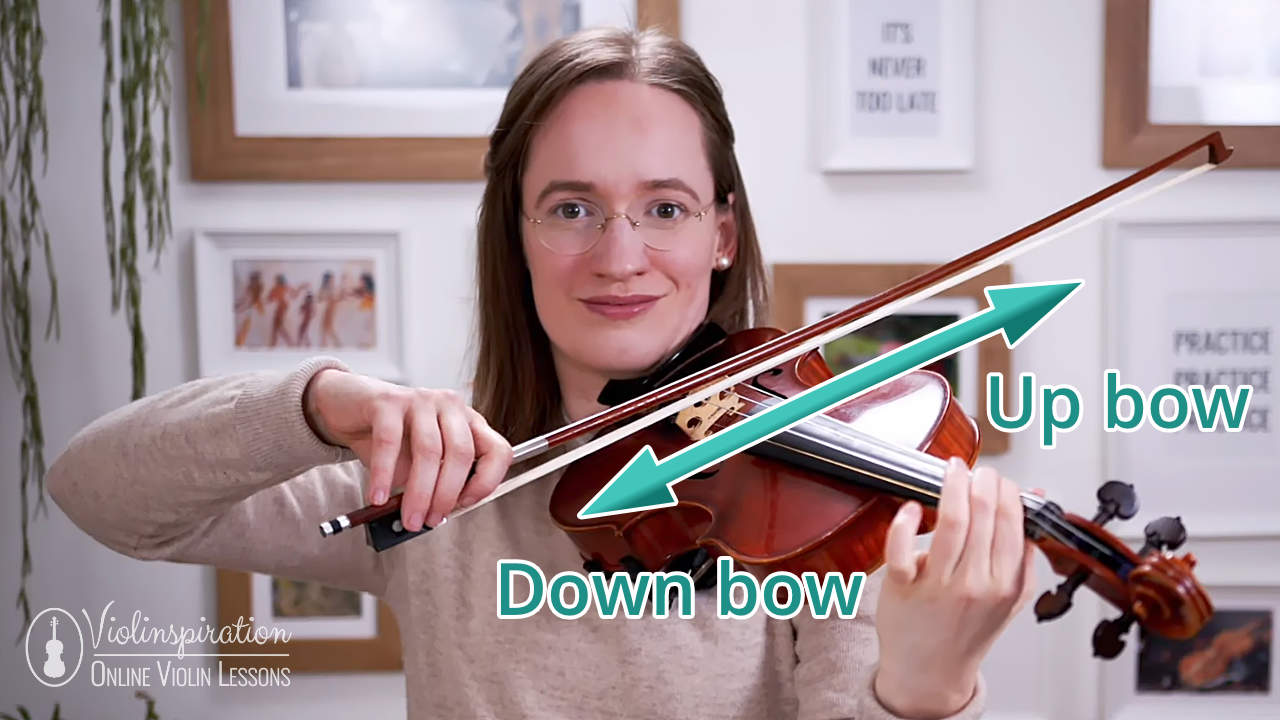
When we play détaché bowing, we want to use long, alternating bow strokes. This means the bow direction will change with every note. To create smooth, sustained notes, we need to keep the bow moving and do our best to avoid stopping the bow between beats.
Use the full bow to create an even tone with singing notes, and keep the hair flat (meaning all the bow hair is touching the string) on the string with an even pressure to get the nicest sound.
Avoiding Accents
Detached notes shouldn’t have accents, so we want to use even pressure and bow speed on each and every note so they all sound similar and no single note sticks out more than another. It helps to play with flat bow hair: your wrist shouldn’t be bent.
Straight Bowing
Détaché will sound the best if you play with a straight bow. The best way to practice keeping your bow straight on the string is to play in front of a mirror! You can instantly see what’s going on, and experiment with ways to fix your playing technique.
Détaché in Famous Violin Repertoire
Sibelius Violin Concerto
There’s a beautiful moment in the second movement of Sibelius’ Violin Concerto in D Minor where the soloist performs with the détaché playing technique. Every note is its own separate bow stroke, and each one gets a full bow. Every string crossing is smooth, but there are no slurs written in the sheet music.
Watch part of Isaac Stern’s brilliant performance below:
J.S. Bach Partita No. 3
There are many passages in Bach’s music that are detaché–there are no bowings or articulations written in the music. Watch how Hilary Hahn performs this excerpt from Bach’s third Partita for Violin: she uses long, separate bow strokes, but there are no gaps between the notes.
What is the difference between bowing détaché and legato?
Legato means the notes should be smooth and connected. We want each note to directly lead into the next. Let’s talk about the violin techniques needed to play a legato stroke, and how they’re different from detaché.
How do we play legato notes?

Legato is usually written with slurs, meaning the notes within the curved line should be played all in one bow. Legato can also be shown by phrase marks, which look like very long slurs.
Legato can be played two different ways – it doesn’t always need to be played slurred. We mainly want a connection between notes, so one note always leads directly to the next, with no break or pause in sound.
The easiest way to play legato is to play the slurred notes all in one bow direction. That’s exactly what the slur (legato marking) tells us to do! Playing multiple notes in one bow takes a lot of “bow control”–knowing exactly how much bow length to use for each and every note.
A great way to learn bow control for slurred legato notes is to practice your scales with several notes slurred: first try slurring two notes per bow, then try four (see example below), and then try eight. It takes a lot of practice to slur notes evenly in one bow stroke, but it will make your legato sound clear and smooth!
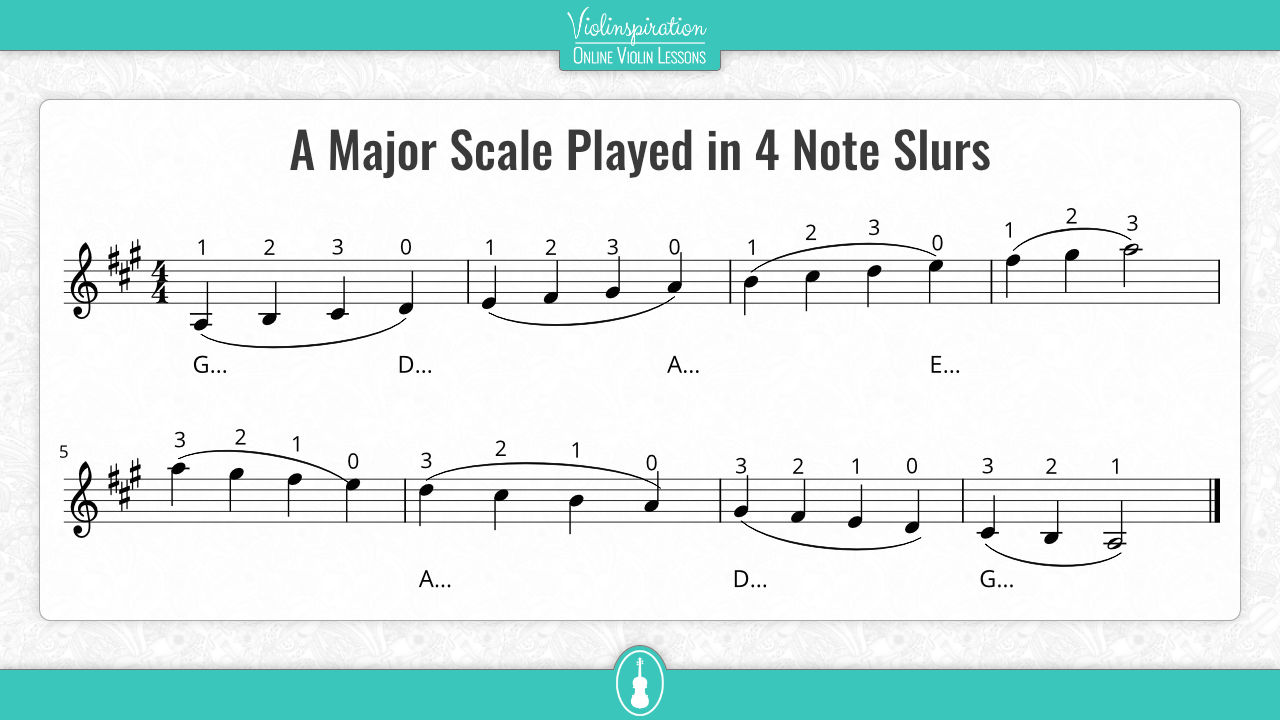
How is legato technique different from détaché?
Legato is usually slurred, meaning we play multiple notes in one bow stroke. This keeps the notes smoothly connected. Détaché is still somewhat connected, but not slurred–we only play one note per bow direction.
Détaché achieves a sound similar to when we speak multiple words in one sentence. Legato technique is more like running your words together with no spaces in between.
What is the difference between bowing détaché and staccato?
Staccato is at the other end of the spectrum from legato: staccato calls for short, snappy notes.
How do we play staccato?

Staccato means short, separated notes. It’s written as a dot above or below each note head. We tend to shorten staccato notes to half their written length, but we still make up the time in between notes–it’s almost as if there’s a rest after each shortened note.
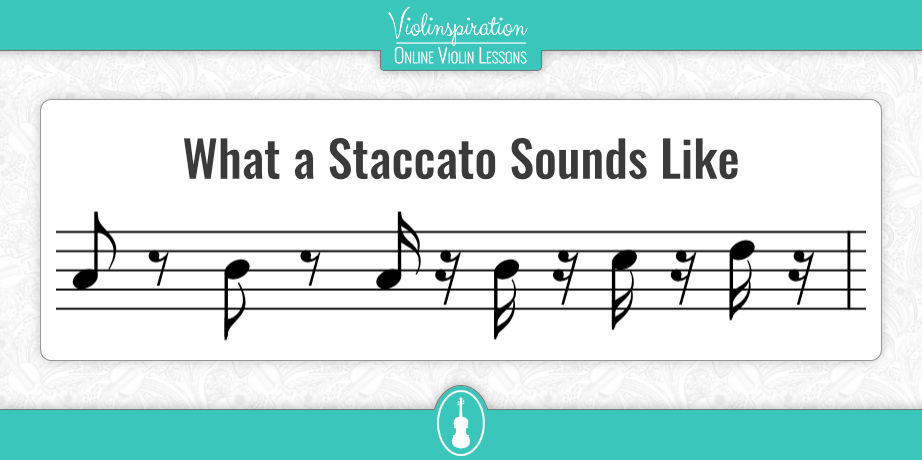
Staccato is best played with a short stroke in the lower half of the bow.

Trying to play staccato in the upper half of the bow is very difficult. The bow bounces and we have much better control closer to the frog. Staccato is often written in faster passages, so you may need to play with rapid bow strokes.
To make each note snappy and crisp, it can help to guide the bow with extra pressure on your index finger. This gives you more control and weight in the bow to make a small accent at the start of each staccato note.
Staccato is usually played on separate bow strokes, but sometimes the music will call for many staccato notes in one bow. This technique is called “flying staccato,” and it’s usually played all up bow. It’s a difficult stroke to master, but it’s quite fun to watch!
How is the staccato technique different from détaché?
The staccato marking calls for short, detached, snappy notes. Each note may sound like it has a little accent on it, and there’s space between every note. We usually use short bow strokes close to the frog or in the middle of the bow.
When we play detaché, there should be no space in between notes, and we typically play with long, full bow strokes. There shouldn’t be accents on any notes in a détaché passage–each note should be played with the same amount of pressure and speed in each bow stroke.
Final Note
Détaché is one of the most important bowing techniques we should learn on the violin. It’s our default, go-to bow stroke, and it pops up in printed sheet music often!
Remember, détaché is written with no bow or articulation markings in the music. When we see a passage with no slurs or staccato markings, we should play detaché.
I hope this article helped you on your journey to learning more bow strokes! It’s likely you’ve already been playing this bowing technique without knowing its name.
To quickly recognize all bowing techniques, download my free bowing cheat sheet, print it, and put it next to your music stand.
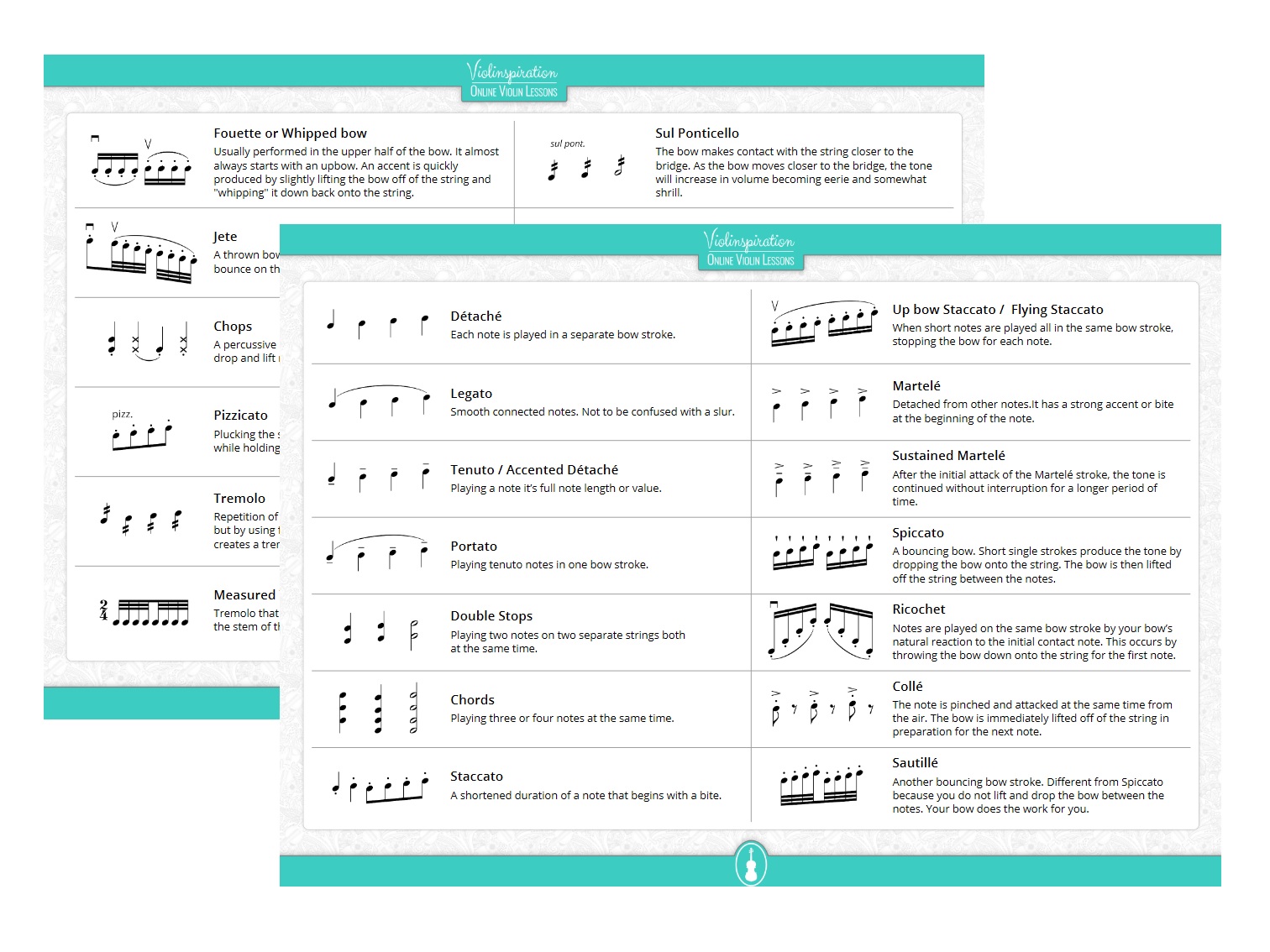
Download Free Bowing Cheat Sheet!
an easy overview of all bowings and signs
